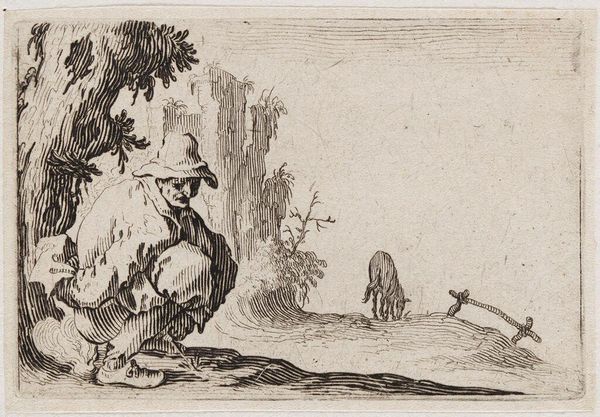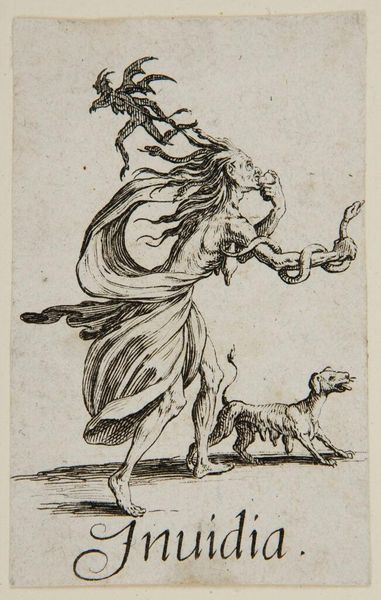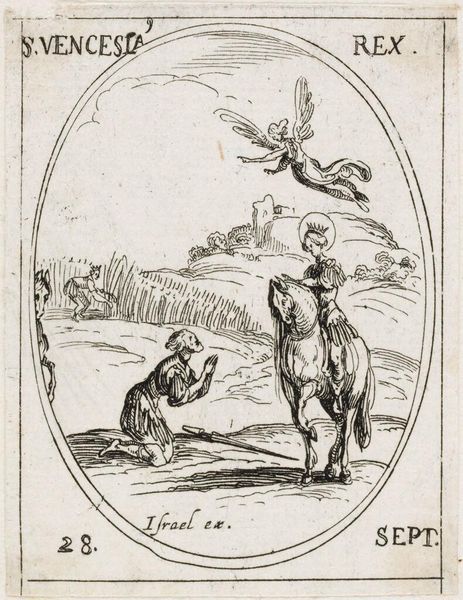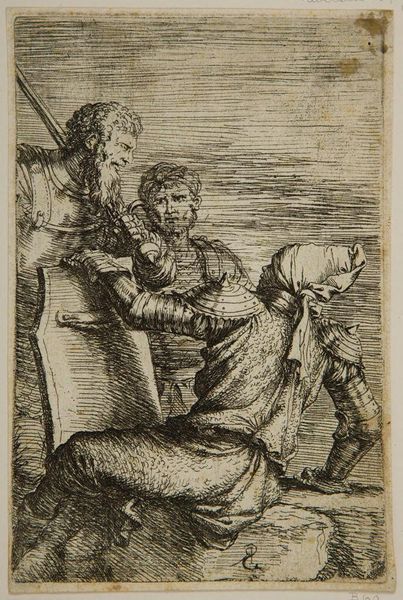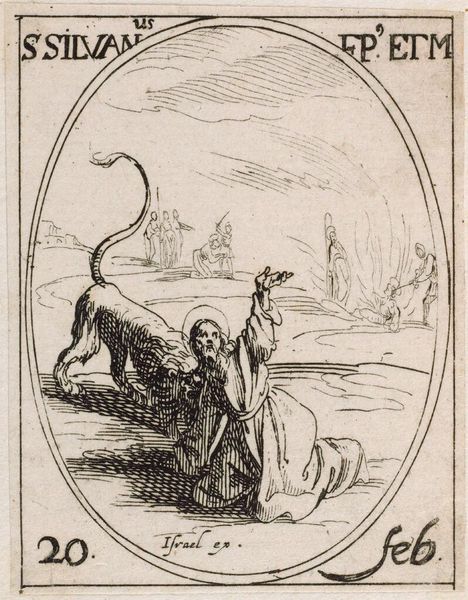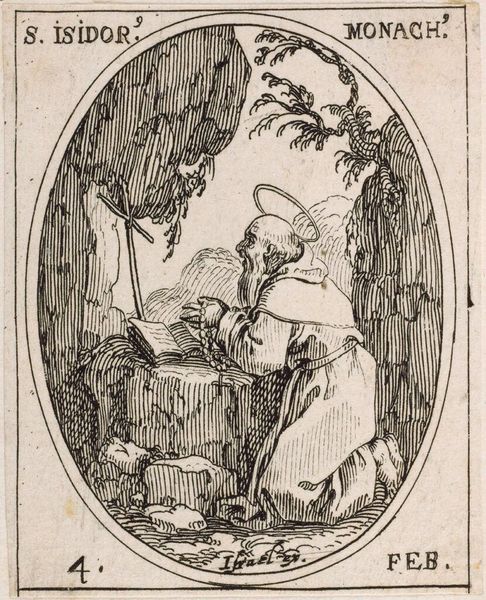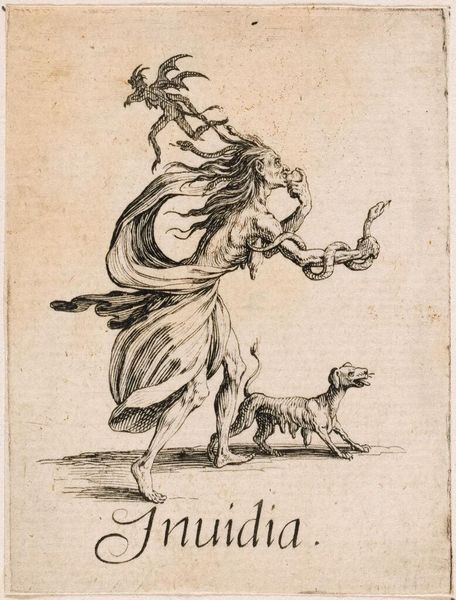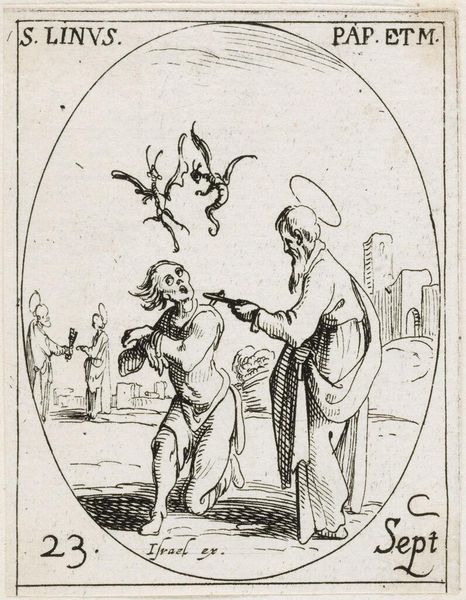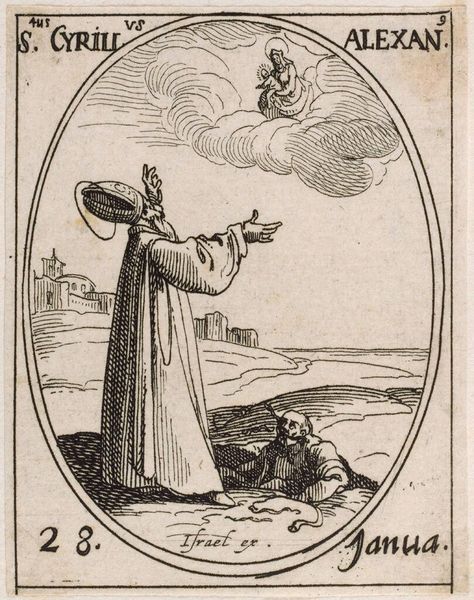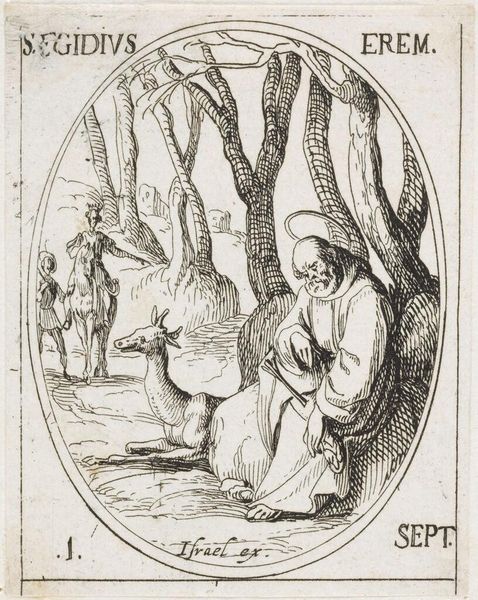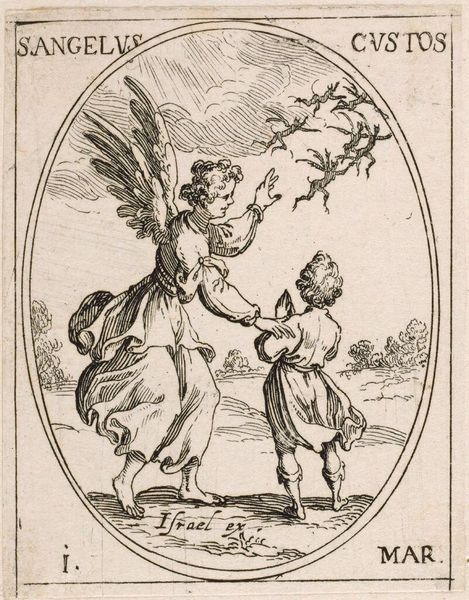
Dimensions: Sheet: 6.8 Ã 4.7 cm (2 11/16 Ã 1 7/8 in.)
Copyright: CC0 1.0
Editor: Here we have Jacques Callot's "Sloth," an etching. It's quite small, almost miniature. The woman seems burdened, and those devilish figures give it an unsettling feel. How does this image speak to its time? Curator: This print reflects the 17th-century societal anxieties surrounding morality and idleness, often linked to religious doctrine. Notice how "Sloth," or "Pigritia," is personified as female. Why do you think that is? Editor: Perhaps to reinforce the idea that women should be industrious? The devilish figures seem to prey on her passivity. Curator: Precisely. Callot used the visual language of his era to comment on societal expectations. The print wasn't just about personal failings, but about the public performance of virtue. Editor: So it’s less about individual condemnation and more about social control through imagery? I hadn’t considered that. Curator: Exactly. It is a powerful example of art serving a didactic, even propagandistic, function. Editor: I’ll definitely look at art from that period with fresh eyes now.
Comments
No comments
Be the first to comment and join the conversation on the ultimate creative platform.
